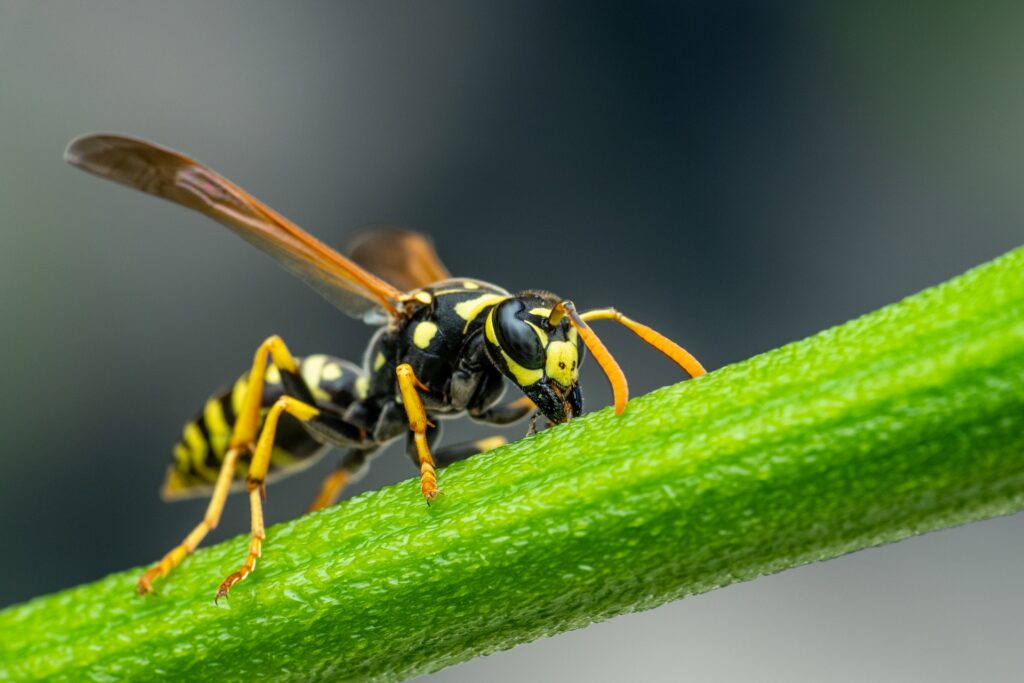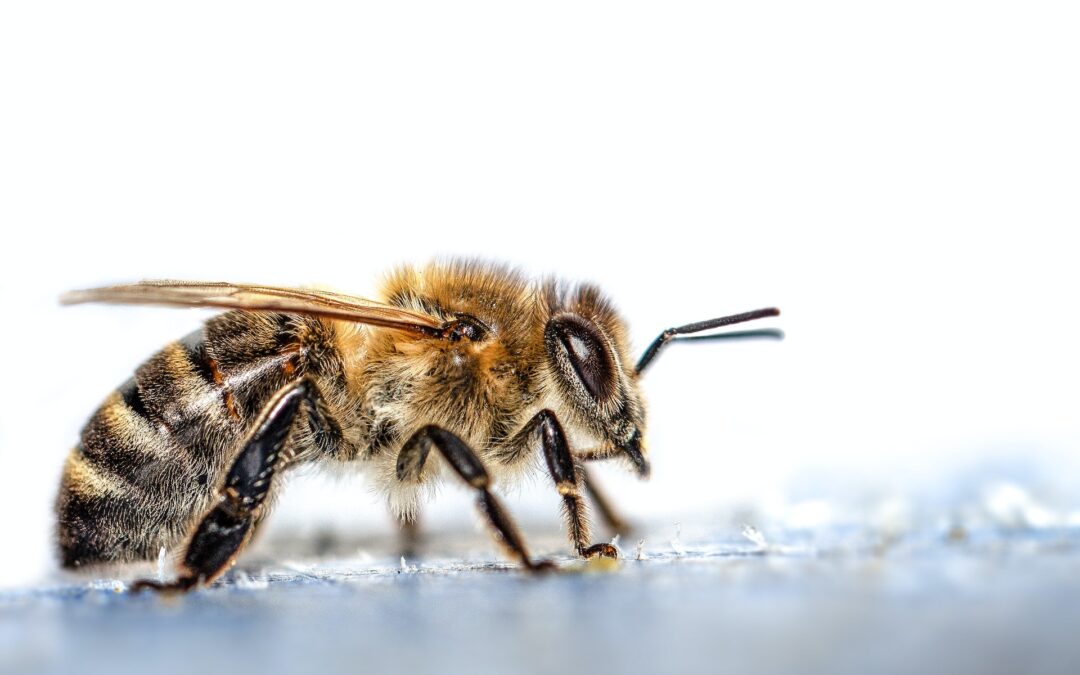Spotting the differences between wasps and bees can be challenging, as some species can have similar physical characteristics. But, there are a few key features that can help you tell if you are looking at a bee or a wasp.
- Body Shape: Wasps generally have a slender and elongated body shape, while bees (as seen above) tend to have a more robust and hairy appearance. Wasps often have a smooth and shiny exoskeleton, whereas bees are typically covered in dense hairs.
- Color: Wasps and bees can come in various colors, but there are some common patterns. Wasps commonly have bright yellow and black or white and black coloration, whereas bees can have a wider range of colors, including yellow, black, brown, and even metallic hues like green or blue. But, it’s important to note that some bees, such as carpenter bees, may resemble wasps with their black and yellow coloration.
- Hairiness: One quick way to determine if you are looking at a bee or a wasp is to look at how hairy they are. Bees are generally hairier than wasps. Their dense hair serves various purposes, including collecting pollen. If it has a noticeably hairy body, it’s more likely a bee rather than a wasp.
- Antennae Shape: Bees typically have longer, and more branched antennae compared to wasps. Wasps’ antennae tend to be shorter and less feathery.
- Nesting Behavior: Observing the nesting behavior can also provide clues. Bees are known to create nests out of beeswax, like the honeycomb structure of honey bees, or nest in the ground or plant stems. Wasps, on the other hand, often build papery nests made of wood fibers or mud, or they may nest in underground burrows.
- Foraging Habits: Bees are primarily pollen and nectar collectors, while some wasps are more predatory, feeding on other insects. If you observe the insect visiting flowers and collecting pollen, it is likely a bee.

A Common Wasp
It’s important to exercise caution when trying to identify stinging insects, as some wasps and bees can be aggressive if they feel threatened. It may be helpful to observe from a safe distance or consult with a local entomologist, naturalist, or experienced beekeeper who can provide more specific information based on the species found in your region.



